Compost tea is a great remedy for yellow leaves on your fruit tree as a result of poor soil health.
Compost tea is a great tonic for your fruit trees and is good for fixing yellow leaves on your fruit trees if there are nutrient deficiencies present. If you’ve identified nutrient dificiencies as a cause, then read on to understand how to fix yellow leaves on fruit trees with compost tea.
Estimated reading time: 6 minutes
We’re always banging on about healthy soil being the foundation of your entire food growing system. It’s one of the main things you should always be aiming to improve.
So it won’t surprise you to hear that some (but not all) causes of yellow leaves can be fixed by improving the soil.
Healthy soil can help prevent yellow leaves
There are lots of techniques available to help you improve the soil, but one of the common questions we’re asked is “how?”.
Adding aged chicken manure, compost, or worm castings is a great start (and we’re big fans of them all). Planting a diverse understory is another really useful technique for rapid soil improvement.
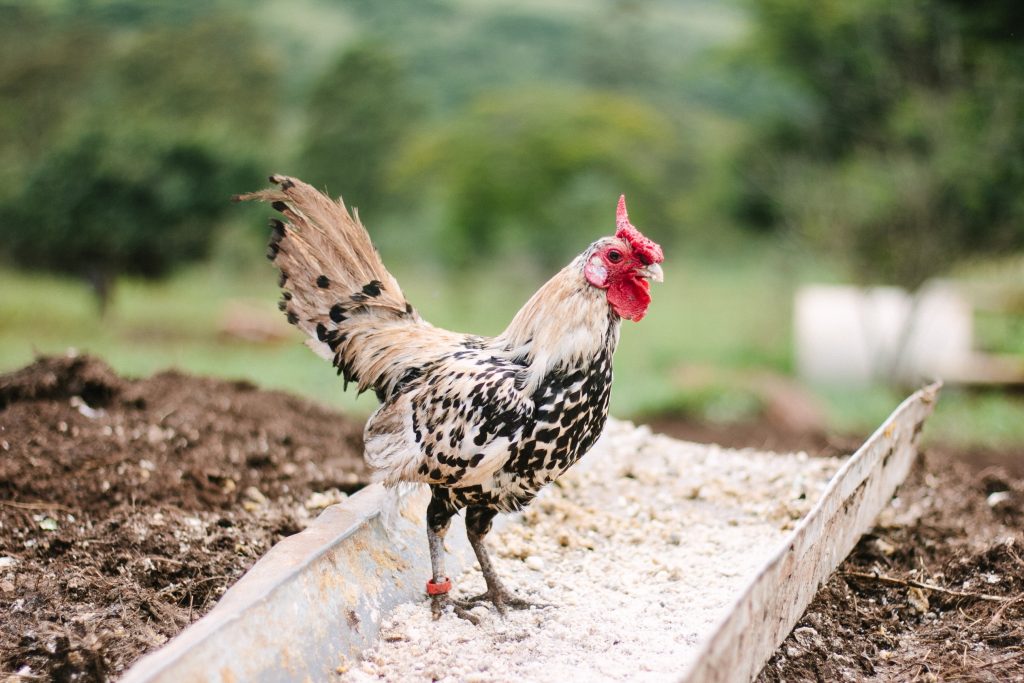
(Image: Unsplash, Rachel Lees)
A slightly more advanced technique is brewing your own compost tea. We brew it on a big scale (as you can see in the photo below), but it’s also easy to make on a home garden scale.

What is compost tea?
It’s probably easiest to start with what it’s NOT, which is compost extract.
Compost extract is made by putting compost in water, swishing it around, or leaving it to soak. You can do a similar thing with weeds to make weed tea or weed extract.
This technique will extract some of the nutrients from the source material (compost or weeds) into the water. Some of the microbes will probably wash off and end up in the tea as well.
It’s a fantastic thing to do and makes spreading the nutrients around your garden really easy.
However, this method doesn’t increase the number of microbes in the brew. That’s the point of compost tea – to increase the number of microbes in your soil.
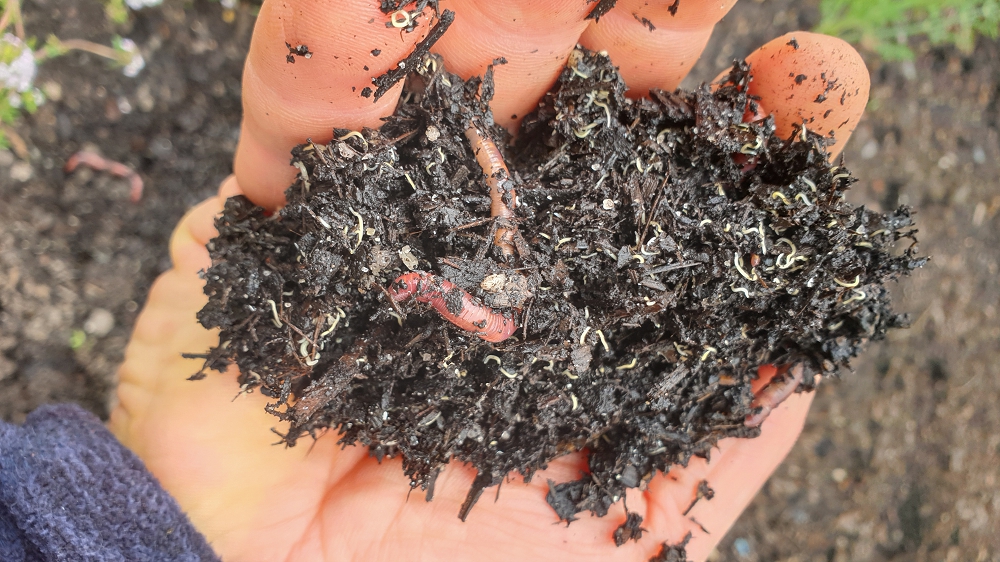
Compost tea increases the number of microbes
To brew compost tea, you start with a small amount of something rich in microbes. This might be good quality (preferably home-made) compost, or worm castings if you have a worm farm.
Leaf litter from under a mature gum tree is also perfect as a source material because it’s highly fungal. Use the broken-down layer under the top layer of litter.
The source material is placed into water and agitated to knock the microbes off.
Then add microbe food and oxygen for 24-48 hours, and voila! What started as a small number of healthy microbes will turn into a huge number in a very short time.
The main types of microbes you’ll be brewing include bacteria, fungi, nematodes, and protozoa. The microbes breed like…well, like microbes (that is, REALLY fast when conditions are right).
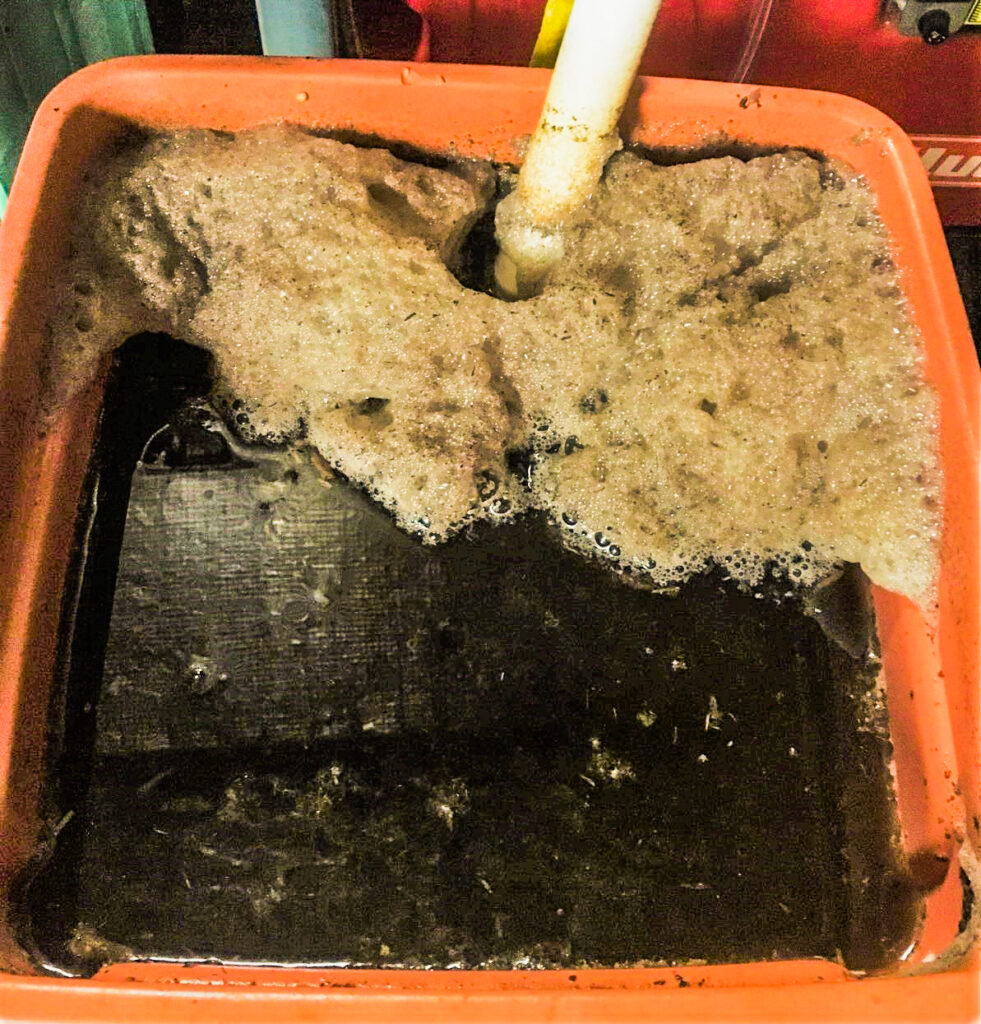
How to make compost tea on a home scale
On the farm, we always make 1,000 litres at a time, but you can make much smaller batches at home.
There are a couple of drawbacks to making compost tea. It’s a bit fiddly to make and needs some specialised equipment.
However, everything you need is readily available and fairly cheap, and as long as you have some simple plans to work from, you only have to set up your brewer once.
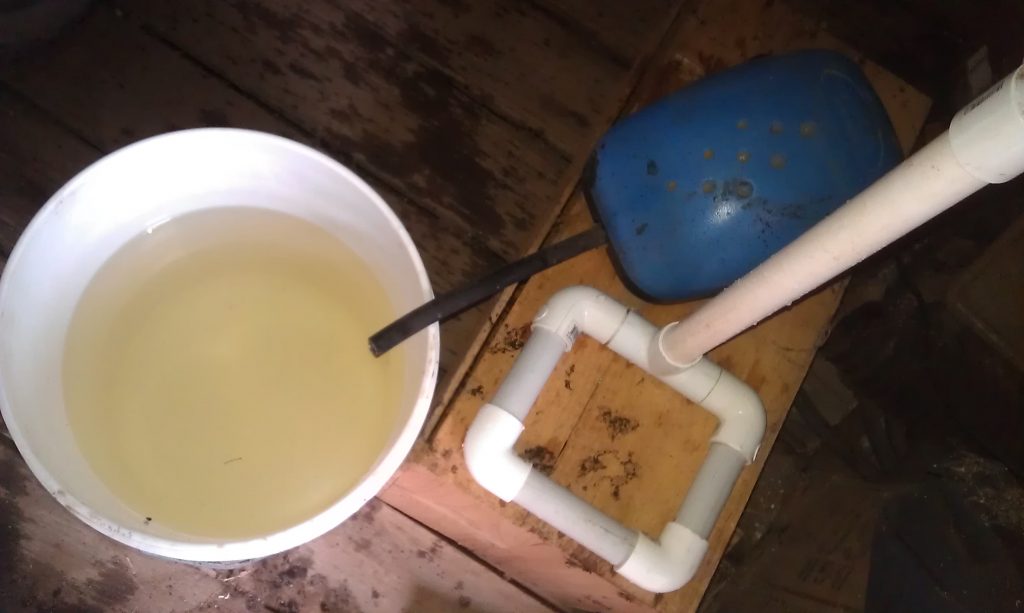
How to use compost tea
We check each batch under the microscope after brewing to confirm we’ve grown the right kind of microbes. We also like to make sure there are actually microbes present and we haven’t just made a nice brew of brown water. That’s not necessary for a home-brew situation, as long as you follow the guidelines.
Then we just put the tea on the soil under our fruit trees and let the microbes go to work.
The other thing to consider is that microbes are a bit like Goldilocks.
They won’t be happy in the soil if the temperature is too cold or too hot, so wait for the weather to warm up before you get started, and then avoid brewing tea in a heat wave.
If the yellow leaves on your fruit trees are caused by nutritional deficiency or poor soil, compost tea is definitely part of the fix. But it won’t happen overnight!
Compost tea is not a “quick-fix” solution. It’s part of a long-term strategy that can take a couple of years to have a positive impact.
The best way to think of compost tea is as another tool in your healthy soil toolbox.

More helpful resources
Identifying the cause of yellow leaves on your fruit trees
Related Articles
Peach leaf curl
Peach tree leaf curl disease is one of the main causes of curly leaves on your peach and nectarine trees, but it’s usually preventable.
How to treat yellow leaves on your lemon tree
Learn how to treat yellow leaves on lemon tree. It’s a common issue with lemon trees and is easy to remedy.
What Causes Fruit Tree Leaves to Turn Yellow
Leaves on your fruit tree can turn yellow for many reasons. Some are normal, some are not so good – here’s how to tell the difference.


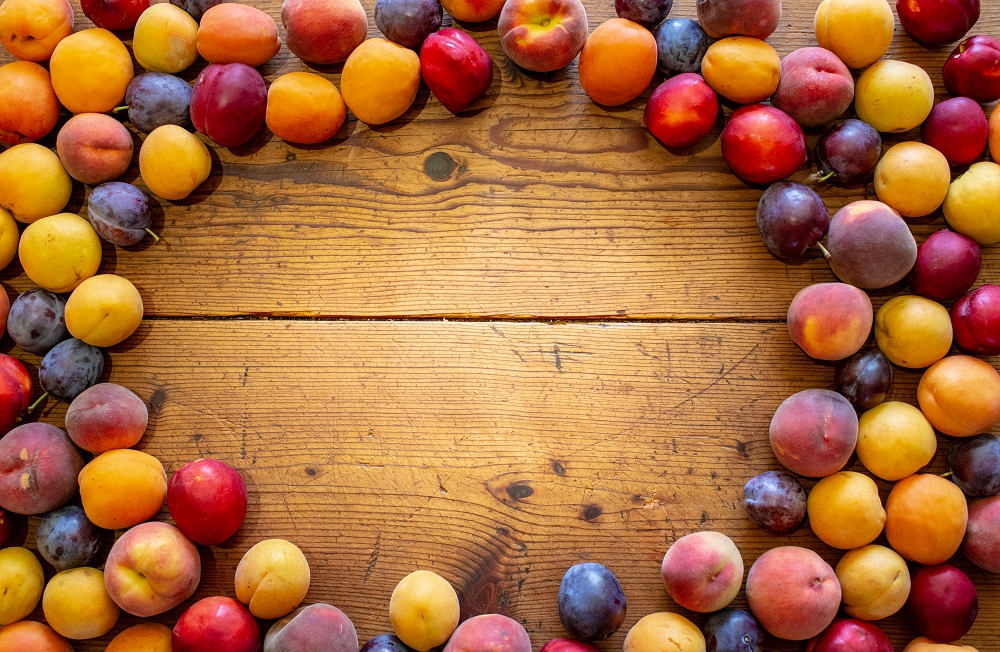
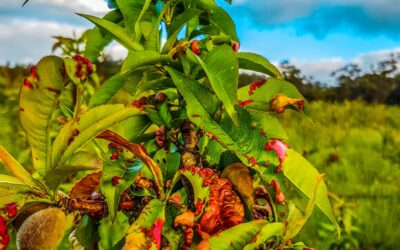

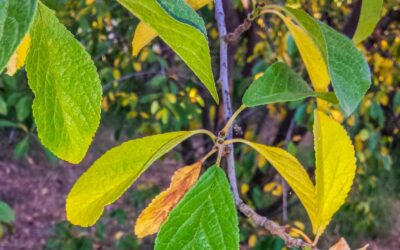
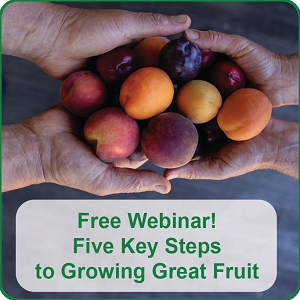
I’m making compost tea using organic material in large plastic drum, I’ve used the nylon bag my fruit salad tree came in and I’m wondering if the microbes can multiply through the bag and I’m not just making brown water. Thanks lsabell and Joe.
Hi Isabell, Just depends whether you are aerating and agitating your brew. If yes, then the bag should be Ok as long as the mesh is not too fine – eg, if it as fine as nylon stockings material, that’s too fine. Other than that it doesn’t matter – the coarser it is, the more of your organic material will end up in the tea, which just means you’ll need to filter it if putting it through a sprayer.
If you’re not aerating/agitating, there’s a good chance the large majority of microbes will remain on the compost in the bag, will not get knocked off into the water, and therefore will not be adding much to the brew or be free to multiply. The brown in the water is the humates in the compost, and is not really an indicator of the amount of biology in your brew.
Hi Hugh, I noticed the photo of you looking at a compost tea sample with your microscope. I’m interested to know what you look for and have a look myself. I’ve spent many hours in the past looking down microscopes at bugs in freshwater samples, and have a microscope at home (I’m a retired scientist, thus the microscope!).
cheers, Bronwyn
Hi Bronywn, Looking for various microbes- mainly fungi but also protozoa and hopefully the odd nematode. I’ve done some basic microscope training with Elaine Ingham (Soil Food Web) so can at least identify goodies and baddies. 🙂
What is your preferred microbe food to add during the compost tea brewing step? Thank you!
Hi, we prefer to use humic acid along wqith liquid fish and liquid kelp as our main microbe foods. We are aiming for fungally dominant tea as we are growing perennial plants (ie, trees) and the humic acid in particular is a great fungal food. Annual plants (such as vegies) prefer a bacterial dominant tea, so fodds such as molasses are useful in this case. Hope thyat helps.